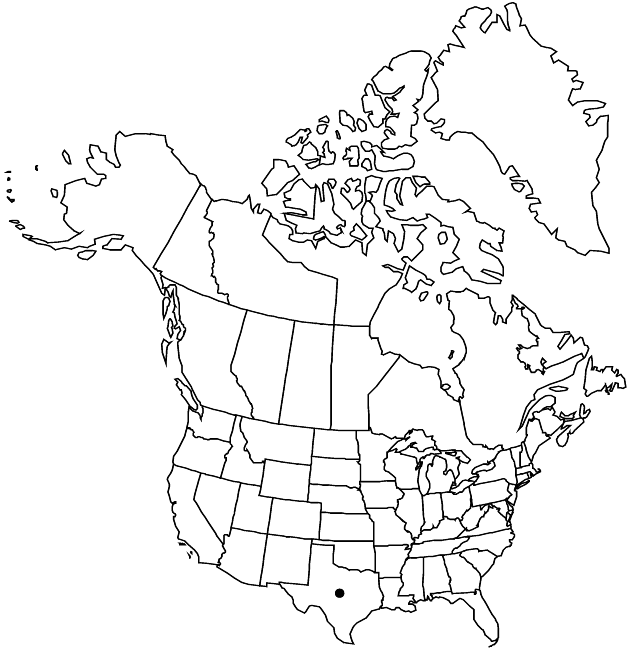Difference between revisions of "Trixis inula"
Inst. Rei Herb. 1: 329. 1766.
FNA>Volume Importer |
FNA>Volume Importer |
||
| Line 24: | Line 24: | ||
|elevation=0–100 m | |elevation=0–100 m | ||
|distribution=Tex.;Mexico;West Indies;Central America;n South America. | |distribution=Tex.;Mexico;West Indies;Central America;n South America. | ||
| − | |discussion=<p>The earliest botanical name for the plants here called Trixis inula is Inula trixis Linnaeus, 1760. In 1763, Linnaeus changed the name from Inula trixis to Perdicium radiale, which was based on the same type and is illegitimate under today’s rules of botanical nomenclature because the epithet trixis should have been used in 1763. The name Trixis radialis (Linnaeus) Kuntze, 1891, was based on Perdicium radiale of Linnaeus and has been used by some botanists; it is superfluous and illegitimate under today’s rules.</p> | + | |discussion=<p>The earliest botanical name for the plants here called <i>Trixis inula</i> is <i>Inula</i> trixis Linnaeus, 1760. In 1763, Linnaeus changed the name from <i>Inula</i> trixis to Perdicium radiale, which was based on the same type and is illegitimate under today’s rules of botanical nomenclature because the epithet trixis should have been used in 1763. The name <i>Trixis</i> radialis (Linnaeus) Kuntze, 1891, was based on Perdicium radiale of Linnaeus and has been used by some botanists; it is superfluous and illegitimate under today’s rules.</p> |
|tables= | |tables= | ||
|references= | |references= | ||
| Line 48: | Line 48: | ||
|publication year=1766 | |publication year=1766 | ||
|special status= | |special status= | ||
| − | |source xml=https://jpend@bitbucket.org/aafc-mbb/fna-data-curation.git/src/ | + | |source xml=https://jpend@bitbucket.org/aafc-mbb/fna-data-curation.git/src/8f726806613d60c220dc4493de13607dd3150896/coarse_grained_fna_xml/V19-20-21/V19_14.xml |
|tribe=Asteraceae tribe Mutisieae | |tribe=Asteraceae tribe Mutisieae | ||
|genus=Trixis | |genus=Trixis | ||
Revision as of 15:09, 18 September 2019
Plants 30–300+ cm (much branched). Leaves usually spreading; petioles 1–3 mm; blades linear-lanceolate to lanceolate or elliptic, 2.5–16.5 cm, bases attenuate to ± truncate, margins entire or denticulate (± flat), induments: margins and sometimes abaxial midveins with glandless and glandular hairs, otherwise glabrous; stomates on abaxial faces. Heads in corymbiform or paniculiform arrays. Peduncles 1–20(–25) mm, little, if at all, inflated distally. Calyculi of 3–5 linear to lanceolate (rarely ovate) bractlets 2.5–17 mm. Phyllaries usually 8, linear to oblong, 8–13(–15) mm, apices acute. Florets (8–)10–15; corolla tubes 5–9 mm, outer lips 4–7.5 mm, inner 3.5–5.5 mm. Cypselae 4.5–9 mm, papilla-like double hairs not producing mucilage when wetted; pappi 7–11 mm. 2n = 54.
Phenology: Flowering Mar–Nov (following rains).
Habitat: Open, sandy sites, thorn scrub, palm groves, thickets, roadsides
Elevation: 0–100 m
Distribution

Tex., Mexico, West Indies, Central America, n South America.
Discussion
The earliest botanical name for the plants here called Trixis inula is Inula trixis Linnaeus, 1760. In 1763, Linnaeus changed the name from Inula trixis to Perdicium radiale, which was based on the same type and is illegitimate under today’s rules of botanical nomenclature because the epithet trixis should have been used in 1763. The name Trixis radialis (Linnaeus) Kuntze, 1891, was based on Perdicium radiale of Linnaeus and has been used by some botanists; it is superfluous and illegitimate under today’s rules.
Selected References
None.